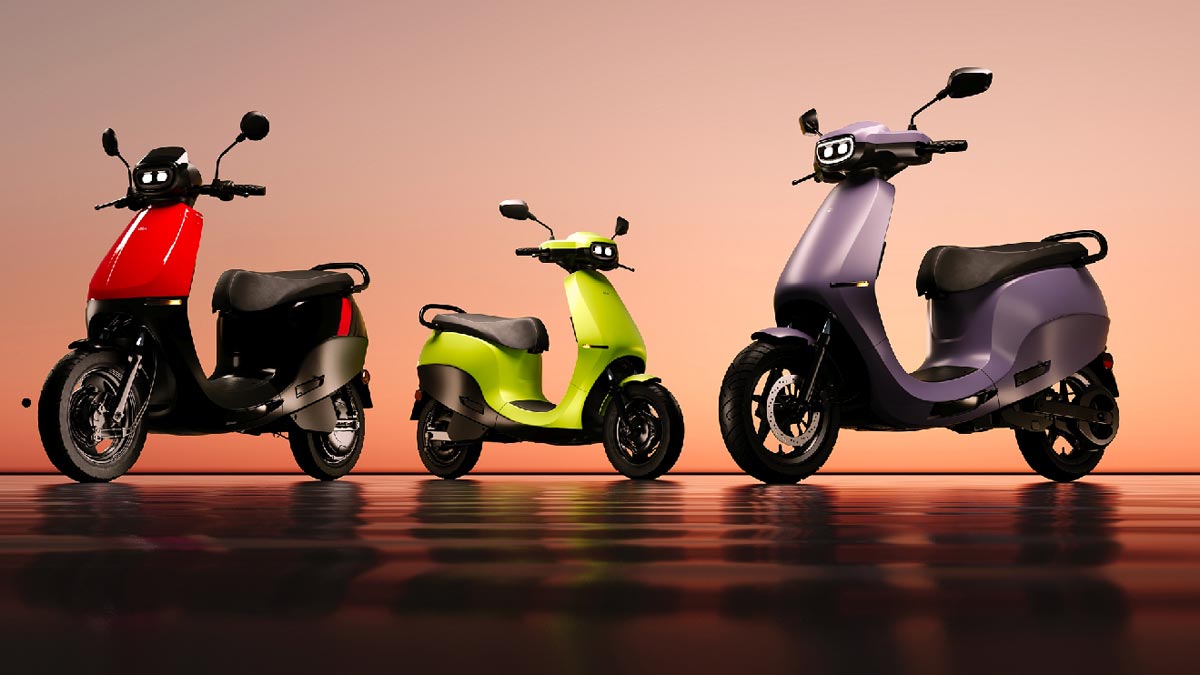Despite quarterly loss of Rs 870 crore Ola Electric aims for stability and growth. Can the company do it?
 Bengaluru-headquartered Ola Electric suffered a quarterly loss of Rs 870 crore in Q4 of FY2025. The net loss stood at Rs 416 crore in the corresponding quarter last year. Despite the setback, the company is aiming for stability and growth and is targeting profitability in FY 2026.
Bengaluru-headquartered Ola Electric suffered a quarterly loss of Rs 870 crore in Q4 of FY2025. The net loss stood at Rs 416 crore in the corresponding quarter last year. Despite the setback, the company is aiming for stability and growth and is targeting profitability in FY 2026.
The company’s revenue stood at Rs 4,645 crore for the financial year that ended March 31, 2025, against Rs 5,126 crore for the corresponding period in 2024. A company statement claims that it has maintained its market leadership position with 3,59,221 units delivered in FY25, as against 3,29,549 units in FY24, on the back of its improved Gen 3 S1 scooter portfolio, capturing a market share of 30 per cent.
The company is now sharply focused on cost reduction and profitability through its Project Lakshya. It had earlier set the target operating cost structure for the Auto segment as Rs 110 crore and is now trending at Rs 121 crore in April 2025. Ola Electric is on track to achieve the target of Rs 110 crore by June 2025.
The company has also streamlined its operations through Project Vistaar for Network Transformation which began in November 2024, enhancing delivery speed (from 12 to 3 - 4 days), streamlining inventory, and enabling same-day deliveries. The company claims that with over 4,000 touchpoints, it became India’s largest EV distribution network in FY25—50 per cent of these are in Tier 3 and rural markets.
A company statement also claims that through Project Vistaar and Project Lakshya, Ola Electric has been able to structurally reduce its Auto segment EBITDA break-even point to under 25,000 units per month. The lower break-even threshold alongside increasing revenue through industry growth, increasing S1 market share, and introduction of motorcycles enables the company to target Auto segment EBITDA profitability through FY26.
As per Ola Electric, its S1 Portfolio continues to be one of the most expansive EV scooter portfolios with nearly one million units sold. The Ola S1 franchise now spans 14 products across Gen 2 and Gen 3. As per the company, with the introduction of Gen 3, Ola Electric delivered 20 per cent higher peak power, 20 per cent more range, and an 11 per cent cost reduction compared to the Gen 2 platform. The company says it also focused on mass segment EV penetration through S1 X, which accounted for 1,96,123 units delivered in FY25, as against 53,083 units delivered in FY24, marking an increase of over 3.5X in units delivered YoY.
Ola Electric has also announced the launch of the Roadster X—its first commuter EV motorcycle—and has already started deliveries of the Roadster X series in May 2025. The company says it is ramping up production at the Ola Gigafactory with improving yields of its Bharat Cell which is undergoing testing across performance, lifecycle, and safety parameters, with phased commercialisation expected in a couple of months.
The aim of Ola Electric in FY 2026 will be scaling up revenue. However, there have been reports previously that many showrooms of Ola Electric lacked the necessary trade certificates under the Motor Vehicles Act to sell, display, or offer test rides of unregistered two-wheelers and Ola Electric has started feeling the heat as Bajaj Auto and TVS have managed to hog a major share of the electric two-wheeler market in recent months. This, along with service challenges and slowing down of growth, had also led to the company laying off more than 1,200 employees.
Despite the first-mover advantage, Ola Electric has been facing stiff competition from major players who have been in the two-wheeler and scooter segment for decades, such as Bajaj Auto and TVS. Ola wanted to have a Tesla-like model in India which may not work in the long run. In the case of Tesla, one can order online and get delivery without having to visit the physical stores. This may not work in India, especially in rural areas. Ola Electric will need to come up with a new strategy to be on the growth path.
Ola Electric is still not profitable unlike its competitors though they have a large R&D team. There is also pressure on the company to keep the costs under control. Being the first mover in the market, expectations are also very high from the customers and hence if the service is not up to the mark the brand takes a hit, profitability and growth will be affected.
Business